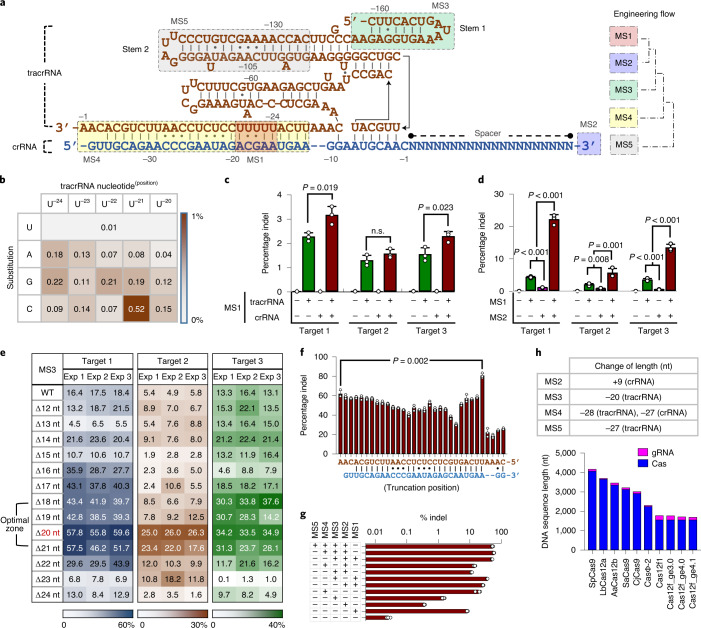Fig. 1. Engineering Cas12f gRNA.
a, Structure of the canonical Cas12f1 gRNA consisting of tracrRNA and crRNA. Five MSs for gRNA engineering are indicated. The gRNA engineering steps were performed sequentially, from MS1 to MS2 and MS3, and finally MS4; MS5 modifications are discussed elsewhere. b, Increased Cas12f-mediated indel frequencies caused by substitutions of uridine in the tracrRNA penta(uridinylate) site (MS1). c, Combined effects of sequence modifications in both the tracrRNA and the crRNA at the penta(uridinylate) site on indel frequencies (n = 3). d, Synergistic modulation of indel frequencies by modifications in MS1 and MS2 (addition of poly(uridinylate) 3′ overhang on the crRNA) (n = 3). e, Optimal length of truncation of the 5′ terminus of the tracrRNA (MS3). Values were obtained from independent triplicate experiments. f, Changes in indel frequencies induced by the truncation of the crRNA–tracrRNA complementary region (MS4). At each position, the crRNA and tracrRNA were truncated and connected with a GAAA tetraloop (n = 3). g, Increased indel frequencies induced by various combinations of gRNA modifications (n = 3). h, Changes in the length of the crRNA and tracrRNA caused by each step of gRNA engineering and comparison of the lengths of sequences encoding the components of several representative CRISPR–Cas systems. NS, not significant. c,d,f, Two-group and multiple comparisons were performed by the two-sided Student’s t-test and one-way ANOVA test, respectively. All error bars represent s.d.

